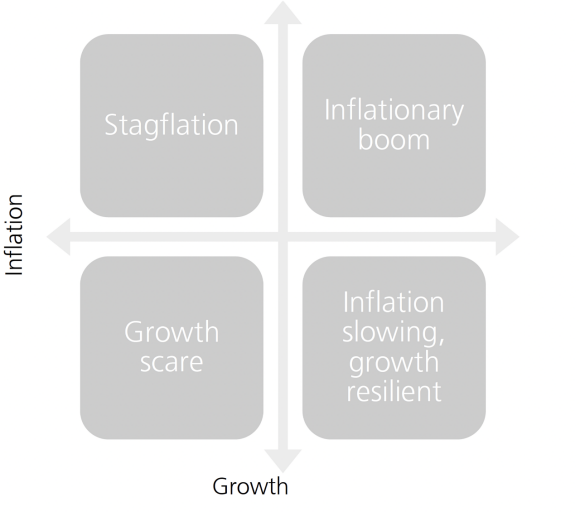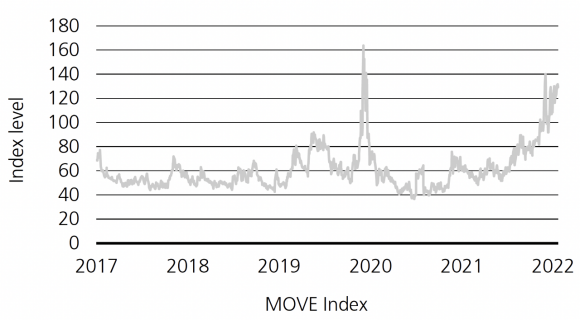Macro Monthly From peak inflation to higher trend inflation
Macroeconomic uncertainty is high – and for good reason.
Highlights
Highlights
- We believe that global equities are less attractive than bonds or credit due to elevated macroeconomic uncertainty and expensive valuations relative to bonds.
- Elevated inflation is at the root of this macroeconomic uncertainty, and the evolution of price pressures is likely to cause investors to consider a wide range of possible regimes in the near term.
- In our view, prioritizing a diversified trade set with positions that are asymmetrically skewed for different individual regimes is the most appropriate approach to asset allocation at this time.
Macroeconomic uncertainty is high – and for good reason. It’s been over four decades since the Federal Reserve was faced with inflation running this hot, and engineering a soft landing as monetary stimulus is aggressively curtailed will be challenging. Russia’s invasion of Ukraine is leaving ripple effects, and perhaps scars, on the economic and geopolitical landscapes. COVID-19 flare-ups in China are being met with stringent mobility restrictions, dampening production and threatening to increase supply chain snarls and weigh on domestic consumption. And commodity price shocks are causing hits to real income that dampen the outlook for consumer spending.
Elevated inflation is the cause or product of these various macroeconomic flash points, and the proximate cause of elevated volatility in bond markets. This stands in stark contrast to last cycle, when low and stable inflation meant that market participants could focus on the ebbs and flows of growth alone. We believe we are migrating from an environment of “peak inflation” to “higher trend inflation,” and that market participants are likely to entertain a wide range of outcomes for both inflation and growth during this transition period.
Seasoned mountaineers are no doubt aware that the descent can be even more treacherous than the climb. So too is this the case with inflation, which we believe will have staying power as a catalyst for cross-asset performance based on how fast, how much, and the reasons why price pressures recede. In our view, stocks are unattractive at the headline level. The global equity risk premium is near its tightest level over the past decade, suggesting that investors are not being adequately compensated for the risk of surprisingly negative scenarios for growth or inflation. We believe that it is not prudent to aggressively pre-judge the eventual macro outcome or overweight risk assets during this time of heightened uncertainty, but rather to prioritize diversification and allocate to relative value positions that offer the best risk-reward in different scenarios: an inflationary boom, stagflation, a growth scare, and a moderation of both activity and inflation to levels relatively similar to the previous cycle. For some, valuations are sufficiently inexpensive that there is limited downside even if macroeconomic outcomes turn out to be in the least favorable quadrant for that trade. Other positions may not be cheap, but have positive momentum and return potential is asymmetrically skewed to the upside, in our view, particularly in the stagflation or growth scare scenarios.

Related
Macro updates
Macro updates
Keeping you up-to-date with markets
Exhibit 1: Lack of clarity on near-term macro regime

Exhibit 2: High rate volatility reflects high macroeconomic uncertainty

A line chart that tracks the Merrill Lynch Option Volatility Estimate (MOVE) Index from 2017 through 27 April 2022. The MOVE Index hit a high of just over 160 in 2020, and is around 140 now in 2022 from around 80 in 2017.
Make an inquiry
Fill in an inquiry form and leave your details – we’ll be back in touch.
Introducing our leadership team
Meet the members of the team responsible for UBS Asset Management’s strategic direction.


